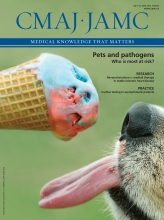Jump to comment:
- Page navigation anchor for RE: Foreskin retraction and circumcision: possible late consequencesRE: Foreskin retraction and circumcision: possible late consequences
Infant circumcision has become an increasingly sensitive subject in recent years [1]. Advantages of circumcision are often discussed but late consequences developing along with age-related skin atrophy remain understudied. The loss of protective prepuce may expose the glans and meatus to direct abrasion and trauma [2]. This letter is about foreskin retraction after a childhood burn but it is relevant also to the status after circumcision. A superficial scald burn of the genital area occurred to a 3-years-old boy in conditions of child neglect and (later) abuse [3]. Immediate medical help was not sought. When the healing ensued, the child started scratching the area. In subsequent years, symptoms of balanoposthitis were repeatedly noticed. Along with the pubertal development, the foreskin became completely and permanently retracted. There has never been any strangulation or compression. The symptoms started appearing at the age ~58 years: recurring superficial erosions in the frenular area, preputial rim and adjacent surfaces. With sexual abstinence the condition comes to remission; but permanent binding of the penis with a soft cloth is necessary as thin atrophic skin of the glans and frenulum area is sensitive and vulnerable. Ointments or vegetable oil are used to prevent sticking with the cloth in case of erosion or discharge. Derangements of blood supply may contribute to atrophic changes; therefore, diabetes mellitus and vascular diseases must be included in the differ...
Show MoreCompeting Interests: None declared.References
- 1. Lauren Vogel. Podcast: new interest in circumcision. CMAJ 2015;187:E295-E295.
- 2. Fleiss PM, Hodges FM, Van Howe RS. Immunological functions of the human prepuc. Sex Transm. Infect. 1998;74:364-367.
- 3. Jargin SV. Child Abuse, Autism and Excessive Alcohol Consumption. J Addiction Prevention. 2017;5(2):4.











